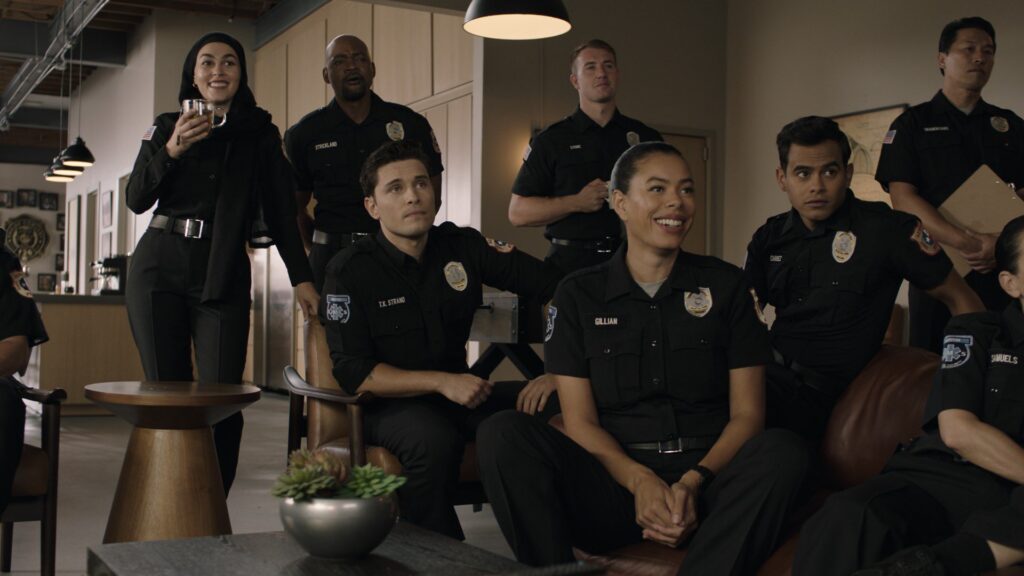Real Reason Why '9-1-1: Lone Star' Is Getting Cancelled After Season 5
If you’ve been riding the adrenaline-fueled rollercoaster that is 9-1-1: Lone Star, then you already know that it’s not your average procedural. This Ryan Murphy creation brought all the drama, disaster, and deeply emotional moments we’ve come to expect from the mind that gave us Glee, American Horror Story, and Pose. With blazing wildfires, building collapses, and the kind of first-responder chaos that makes your pulse race, Lone Star quickly became a staple for viewers who like their TV with both heart and high stakes.
Rob Lowe led the charge as Captain Owen Strand, a silver fox, 9-1-1 veteran, and walking emotional complexity surrounded by a cast of diverse, lovable characters who fought everything from natural disasters to personal demons. Since its 2020 debut, the show has found its groove blending over-the-top emergencies with grounded, human storytelling.
But just as things were heating up… sirens off. 9-1-1: Lone Star is officially wrapping up after Season 5. No fadeout, no extended goodbyes, just shelved. And while we’re left rewatching old episodes and clutching our emotional support blankets, one question lingers: Why now?

Here’s the thing: TV isn’t just about ratings and fan love anymore. Behind every building collapse and slow-motion rescue is a tangled web of business deals, licensing costs, and corporate politics. And 9-1-1: Lone Star was caught right in the middle of it. The issue stems from Disney’s 2019 acquisition of 21st Century Fox, which included the 20th Century Fox film and TV studios but not the Fox Network itself. So while 9-1-1 and Lone Star continued to air on Fox, the setup was far from ideal.
Ryan Murphy revealed in a recent interview with Variety, “Sadly, we all love Lone Star, but the financials just didn’t work. It’s a Disney company that was on a Fox network, and it just was never going to work,” he revealed.
Basically, Fox was airing a show it didn’t own, and Disney was footing production costs for something that benefited a competitor. In today’s TV landscape, where networks crave in-house content they can fully control and monetize, Lone Star became a square peg in a round hole. It wasn’t about quality, it was about business, and unfortunately, the numbers just didn’t add up.

9-1-1: Lone Star didn’t do anything halfway. From massive explosions and catastrophic storms to top-tier special effects and those high-stakes rescue scenes, every episode looked like a mini-blockbuster. But all that cinematic drama? It doesn’t come cheap.
Producing a show of this scale requires serious cash. We’re talking high salaries for a star-studded cast (hello, Rob Lowe), elaborate sets, location shoots, stunts, and CGI that actually looked good on-screen. Over time, those costs add up fast.
Even with solid ratings and a loyal fanbase, the price tag reportedly became harder to justify, especially when the show was already tangled in a tricky network situation. In an era where networks are tightening budgets and favoring cheaper, in-house productions, Lone Star stood out, and for all the expensive reasons. It delivered big-screen energy, but unfortunately, that blockbuster budget became part of its downfall.

While the series is wrapping up with 9-1-1: Lone Star season 5, fans shouldn’t lose hope just yet. The original 9-1-1 series has already found new life on ABC, and with Ryan Murphy still involved in the universe, there’s always a chance for crossovers, spin-offs, or even surprise character returns down the line.
The 9-1-1 franchise has proven it’s got staying power, so while Lone Star might be going dark for now, don’t count it out completely. In TV land, no door is ever truly closed… just dramatically left ajar.









